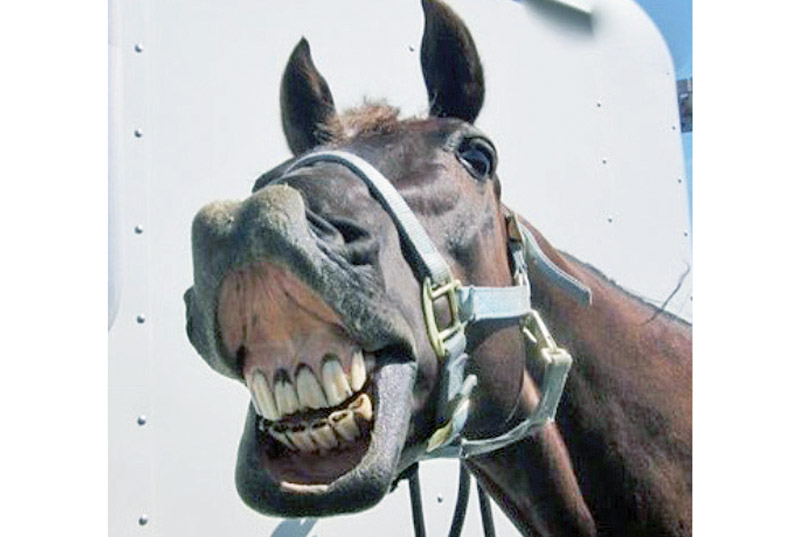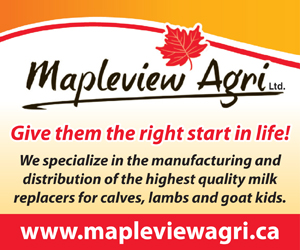The cost of leasing or owning a horse
Courtesy Photo
By Caylyn Walker
AgriNews Contributor
One of the very first things you may hear about having a horse is how expensive it can be. Horses can be quite expensive, but of course, like most other things, there is a range of expected costs and you can often choose where you want to be extravagant.
The most basic, and one of the most expensive, aspect of having a horse is the cost of feed. Horses need to eat approximately 15-20 pounds of hay per day. There is a vast range of hay types that can be purchased including timothy, alfalfa, orchard grass, mixed grass, etc. Horses require a good quality hay that is free of mold, dust and toxic weeds. Horses only have one stomach, unlike cows, sheep or goats, and can get quite ill and even die if they are given poor quality feed. Hay can be purchased in small square bales (typically 40-50 lbs), large round bales (typically 800-1000 lbs), or large square bales (typically 600-750 lbs). The type of hay purchased will depend on the equipment available to handle it on the farm where your horse is kept and the particular set up of your stable (e.g., feeding routine and storage/feeding area sizes).
In some places where hay is not as available, hay cubes or hay pellets can be fed as a replacement for, or supplement to, the hay available. Often these products will need to be soaked in water before feeding to avoid having your horse choke on the feed. If you are boarding a horse at a stable, the barn you are boarding at will look after purchasing and feeding the hay or cubes as part of your board payment, with the exception of ‘self-care’ boarding barns where boarders are typically responsible for covering all requirements for boarding their horse.
Though some horses manage on hay alone, most horses will require additional supplementation to ensure they are getting all of the nutrients they require to stay healthy. A simple hay analysis can tell you which important nutrients are missing from your hay. There are numerous feed representatives for the different feed companies that can review your hay analysis and advise which supplements would be most suitable for your horse. This is the first step to ensuring you are not needlessly feeding expensive supplements or under-supplementing your horse. Feeding rates for most products can usually be found on the feedbag and/or on the feed manufacturer’s website. Supplements can also include additives for airway issues, stiffness in gaits, building topline, adding weight and a plethora of other purposes so be sure to do your research and never be afraid to ask your vet or local nutritionist for help!
Once you have the basic feed requirements of your horse covered, the next item to look at is farrier expenses. Horses can either be barefoot (without shoes) or shod. Sometimes horses will be shod on all four feet, and other times on just their front or hind feet. Barefoot trimming is more economical than shoeing a horse, but not all horses are able to be barefoot. Shoeing may seem simple, but there is a wide range of shoe and shoe packages available for horses depending on the purpose of the shoe. From front weighted shoes to corks (think cleats for horses), to sliding plates and even corrective shoes with wedges, there are all sorts of products available for different purposes!
The first step is finding a reputable farrier. A good farrier will help determine which approach is best for your horse based on which discipline(s) you are undertaking and the condition of your horse’s feet. Typically, at a boarding barn, there will be a farrier or two that the barn routinely uses for the horses in their care, but often other farriers can also be used. Horses should see a farrier on average every 4-6 weeks. It can be useful to use a farrier that routinely books appointments at your barn as often there will be someone available to hold your horse for that farrier if you are unable to attend the appointment.
Veterinary costs for a horse can vary widely, but there are a few basic costs that all horse owners should plan for. Horses, like many pets, should receive annual vaccines according to your vet’s recommendations. Every geographic area has different risk factors for diseases such as rabies, West Nile virus, Eastern Equine Encephalitis, strangles, Potomac horse fever, and equine influenza, just to name a few. Some barns and even some shows or clinics you may want to attend, require proof of vaccinations for your horse.
Aside from vaccines, horses should also have their teeth checked at least annually by a veterinarian. Horses’ teeth continue to erupt throughout their lives and the grinding motion of chewing can leave sharp points that lead to ulcers and issues inside their mouth. After an examination, a vet will either hand float or power float your horse’s teeth to ensure they align and that there is adequate chewing surface to reduce chances of choke and also to decrease the chances of painful mouth ulcers from sharp points. While the vet examines the horse’s mouth they will use a speculum to hold the horse’s mouth open so that they can get a good view of all of the teeth. Your vet may advise removing the wolf teeth if your horse has them. The wolf teeth are often located where the bit lies in the horse’s mouth and can cause pain when the horse is being ridden. Removal of the wolf teeth is usually an easy procedure that can be done while the horse is under sedation at your barn.
Routine vet costs are part of responsible horse ownership and must be planned for in order to keep your horse in optimal condition. Emergency vet costs obviously cannot be planned for, but it is a good idea to either obtain insurance for your equine partner or budget to save some money in the event your horse gets injured or sick. Despite our best efforts to keep our equine partners safe and healthy they inevitably find trouble whether it be in their pastures or in their stalls. From minor lacerations to fractures, punctures or colic, if you spend time in a stable you will witness a plethora of medical situations.
Deworming your horse is also an integral part of a solid health plan for your horse. Deworming should be done per the recommendation of your vet and is usually advised after a fecal sample is sent in to your vet for analysis. The fecal exam will determine the types of parasites and the parasitic load your horse is carrying. This information can be used to determine which deworming product you should use. Different dewormers eradicate different parasites and are used at different times. In the past, it was normal practice to use a rotational deworming program where a different type of dewormer was used every 10-12 weeks. Over the years parasitic resilience has become an issue and more and more vets are recommending deworming your horse only when necessary and based on the fecal sample sent in. Some horses naturally carry a higher parasite load than others and may require more frequent deworming. The number of horses in a pasture, the number of horses coming and going from a barn, and even the type of weather and pasture quality can affect how prone your horse is to parasites. There are a number of techniques and stable management practices that exist to help reduce the risk of parasites including removing manure from a pasture, ensuring adequate quarantine of new horses and having sound deworming practices at the barn. At a boarding barn all horses will typically be dewormed on the same schedule and the barn manager will inform you which dewormer should be used at different times of the year. Some barns will take care of deworming for you and simply add it to your monthly board bill.
Using low quality feed, skipping routine preventative health care and avoiding farrier visits may save you a little money in the short term, but the long term consequences could cost you a bundle, not to mention negatively impact your horse’s well-being and fitness for your equestrian goals.













